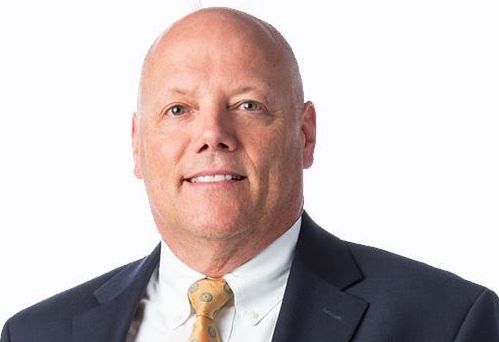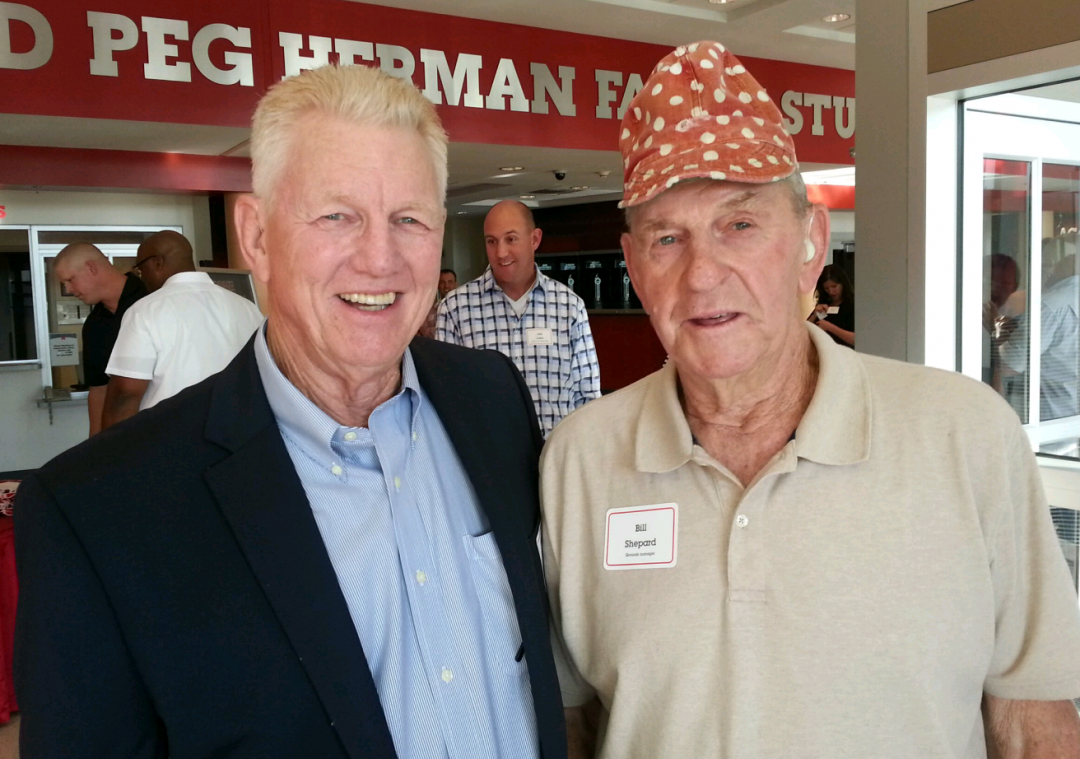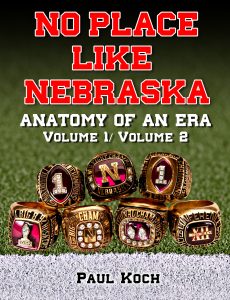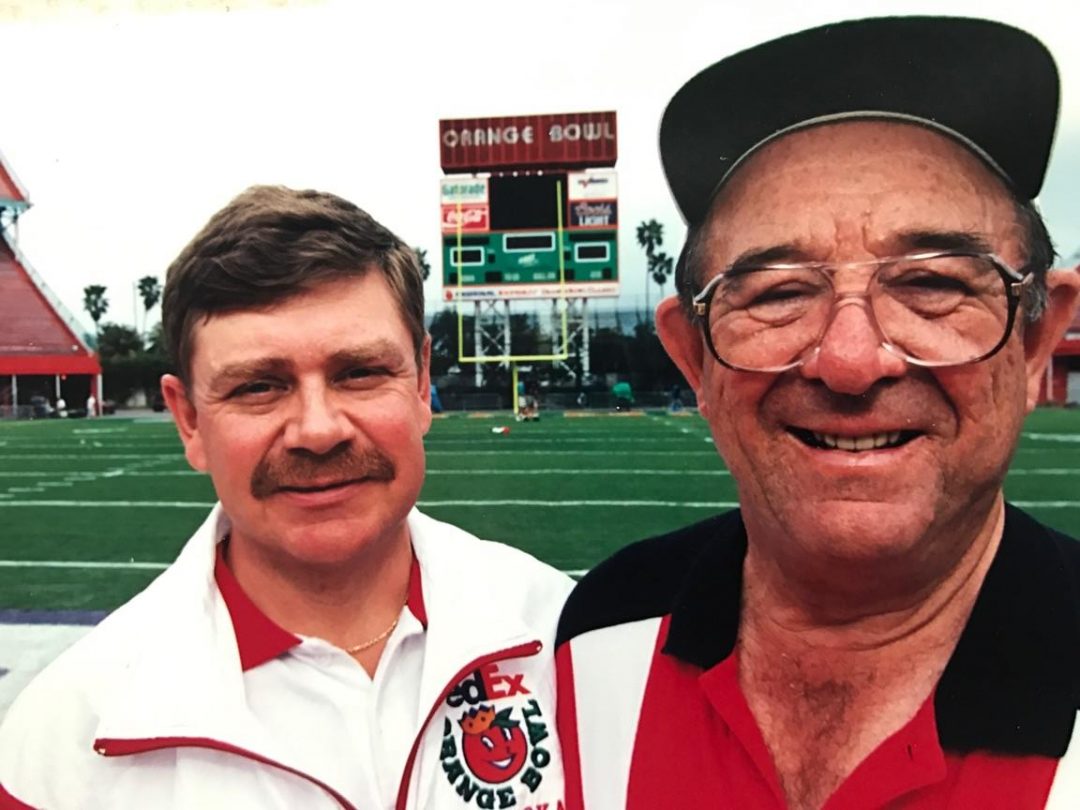Anatomy of an Era: Jack Nickolite, Athletic Trainer, Part 1

Excerpted from Chapter 41, No Place Like Nebraska: Anatomy of an Era, Vol. 1 by Paul Koch
The difficult we do immediately. The impossible takes a little longer.
-Motto of the U.S. Army Corps of Engineers during World War II
Doctor Who, the long-running BBC television program about a mysterious time- and space-traveling adventurer who finds himself in the most outlandish of spots and predicaments, always managed his way out of a scrum. Always. With a run of over 25 years, many actors have played the role, very much like the role of Certified Athletic Trainer at the University of Nebraska. Already we’ve been introduced to one former trainer in Doak Ostergard, and now we happen upon three other ‘good doctor’-types, each with their very own personalities, temperaments, methods, and insights when it comes to the long, limping walk down Cornhusker Memory Lane. If I didn’t get the point across earlier, you have to know that without these guys –these guys– the team doesn’t get on the field. Period. At least not a healthy team anyway, because it’s a long season of bruises, strains, pulls, and sprains.
The strength of the training room lineup, here we happen upon Jack Nickolite in the batter’s box, with George “Sully” Sullivan on deck and Jerry “Webex” Weber in the hole, a literal Healer’s Row, to paraphrase the ’27 Yankees. So grab a comfy bleacher seat, a cold brew and a box of Cracker Jacks as these fellas take their cuts…and fix ‘em up lickety split, as usual.
Notable quote #1:
“He never wavered. He knew the best way to run a football program on the collegiate level. And this isn’t the easiest place to recruit players, but he knew it could be done here and he kept after it and he had great teams.”
Jack Nickolite
Question: What got you involved in sports medicine, Jack?
Jack Nickolite: Well, what got me interested the most? I had always had interest in medicine and always loved sports, so the combination of the two was what got me there.
I didn’t have major for a while. I was in general studies and then got into sports medicine and biologic sciences, health education, and physical education. Then from there I got interested in sports medicine.
Q: How did you first begin working with the training room?
JN: Well, one of the classes we would try to take was the athletic training class. And Jerry Weber taught it, so that was probably the most influential thing that happened to me as far as getting involved in athletic training.
Q: In what way?
JN: Well, it was the material. The material and taking care of athletes. Jerry Weber was a very good teacher.
Q: So the class is over and you go in to somebody and say, “I want to be an athletic trainer”?
JN: There were some specific guidelines as far as getting involved in it, and you talked with George Sullivan and Jerry Weber, and Dennis Seely was the director at that time, and then Glen Johnson was involved, too. So you talked to those people and they gave you some general direction. I started working some volunteer hours in the training room (which were required), and the rest is history.
Q: What year did you start?
JN: I believe it was about ’79, and the biggest thing was the size of the people. The size of the athletes. It was big back then, but they aren’t even comparable to today. Back then there were guys like Kenny Brown, Richard Berns the running back (who was a real good player), Junior Miller. I still see him every once in a while. He’s every bit as great a guy now as he was back then.
Q: So you’re a student trainer working for free and putting your hours in, what was your next step?
JN: Well, by the time you were a junior or senior you’d get a chance to work in the training room and there was some reimbursement for your hours, so that was nice because it helped with your tuition and going to school.
Q: Were you tasked with working with a certain team?
JN: Well, my first assigned sport was men’s basketball. Before then we’d put some time in with all sports teams and rotate.
Q: So you’re on track and it comes time to graduate. Then what happens?
JN: Then I became a Graduate Assistant. I think that was around ’81. At that time most of the weight room people got their Masters degrees, as well as most people in the training room in collegiate settings. So I did that.
Q: So you get your Masters. Then who did you work with? Any football duty?
JN: Sure. I worked with football and basketball, and had a lot of responsibilities at the Bob Devaney Sports Center training room.
Q: Do you recall any specific games back then? Any moments stand out to you?
JN: If you’re talking about success on the field, I remember the losses more than the wins.
Q: Any stand out more than another?
JN: Losing to Oklahoma a few times, and losing one year to Penn State and losing to Florida State. That was a tough schedule.
Q: Were you traveling with the team to Penn State and that scandalous out-of-bounds call in ’82?
JN: I sure was, though I was too far away to see it. That was a huge loss. We had a heck of a team, and there was also a bounced pass in the end zone that was called a touchdown!
Q: Do you recall meeting Coach Osborne for the first time?
JN: Well, he’d come down into the training room quite frequently. He’d usually hunt down George (Sullivan). Tom always had a presence, an aura. And it was usually very positive, as you recall yourself. I think probably because he treated people as fairly as anyone could treat anyone. Tom was friendly, cordial, and very fair to everyone he’s ever met. He was always very honest and forthright.
Q: Any recollections of any other coaches of the time?
JN: Oh yes, Tom had a great staff. It was a huge asset, too. He had a few coaches that were left over from Coach Devaney’s staff: people like Jim Ross. Jim Ross was an administrator as I got to know him, but what a great guy he was. Then he had Cletus Fischer who was an absolutely great coach, a fellow Nebraskan, had coached in high school. He coached at St. Edward and St. Ben’s in Columbus, and then I think at Holy Name in Omaha, and then coached at Nebraska. Then, also, Mike Corgan was on the staff.
Q: I hear he was a real character…
JN: He was a great coach and a great guy. And the thing about those guys is that players absolutely loved them. They had the respect of the players.
Q: How you do you think they earned that?
JN: Well, their longevity and their confidence. And then as new coaches arrived and -I don’t want to say developed, as they matured further- guys became great coaches on Tom’s staff, guys that Tom hired on. Like Charlie McBride.
Q: What sticks out about Charlie?
JN: Charlie was a great motivator. He could motivate a team and he could give some great talks. He knew the game of football and he knew how to get kids to play it.
Q: What about when Turner Gill joined the staff?
JN: Turner arrived as a player in about ’80-ish. When he arrived as a player, just watching him on the practice field and the way he carried himself? You knew he was a great athlete, destined to be a great quarterback and a great team leader. Then he comes back as a coach and he’s probably gonna be as every bit as good a coach as he was a player.
Q: So, when did you become a full-time staff member?
JN: I believe it was about ’83. I worked with men’s basketball and football primarily, as much football as I could early in the season and then as basketball got under way I did a little less because of basketball responsibilities. But it was good, because you got to work with two teams, got to know more guys and travel and do all the rest, what with my taking care of the basketball team, too.
Q: For the uninitiated, what was it like going to the bowl game as a trainer? Is it a vacation or the usual hard work?
JN: Well, if you’re in a different city and you’re in a hotel things are really close together, so it’s easy to get around as far as getting up, going to breakfast, taping and going to the practice field. Sometimes the practice field was a ways away, a few miles, but for the most part things were close together. And so, time management was pretty good.
They were fun days just like working a regular day in the training room when you were back home. Coach Osborne tried to keep a routine schedule, if you will, but he tried to give the players some time to have fun, too. But we’d be taping and giving treatments and practice pretty much like a regular day.
Q: Can you describe a regular day for an athletic trainer?
JN: Well, with football it’s usually getting to the early meeting, talking to the coaches somewhere between 6:30 and 7 in the morning, telling them about injured players and their progress, and then usually from the meeting time to about noon was involved with treatments to the injured athletes, treatments and rehabilitation as they came in between classes. Lunch, and taping for an hour and a half or two, then another short meeting giving us some time for rehab or catching up on any paperwork you had to do, cover practice from 3 to 5 p.m., treatments for an hour or so, then Dr. Clare and Dr. Dugas or Dr. Strassberger would come in and see the injured athletes and usually get done any time between 6:30 and 8 o’clock. That was usually our day.
Q: What did you guys usually do during practice?
JN: Usually watching practice, watching the guys who were coming back from injuries, being out there in case someone is injured out there on the field, in case they’re hurt.
Q: Speaking of the field, do you remember Bill Shepard?
JN: You know, probably the greatest groundskeeper of all time. And a great guy. I remember one morning I was going to the stadium and we were gonna work out early in the morning, and I get there and I see this guy and I see somebody else in the old north fieldhouse (there was some construction going on the field house and I thought they must have been some construction people), and then old Bill Shepard comes walking up out of the basement at north stadium and I say, ‘Bill, who are those two guys over there?’ He said, “They’re trying to break in over there!” So I go call Campus Police! (laughs) Anyway, after all was said and done, he ran one of those guys down into the pit of the old fieldhouse and cornered him and made him sit there in a chair. And when he got up to call the Campus Police the guy jumped out of his chair and ran out the side door… ran over the railroad tracks and jumped a fence and he lost track of him. (laughs)
Q: Cornered him down in the pit, huh? (laughs) Was that when you and I used to work out at 5 in the morning before the athletes showed up to start the day?
JN: Yeah, that was it. It was eventful.
Q: Didn’t Shep always have that polka dot or striped cap?
JN: Polka dot. Kind of an old engineer’s cap like they used to wear on the railroad. (laughs)

Charlie McBride & Bill Shepard (Paul Koch)
Q: What was your least favorite sideline moment or stadium to visit?
JN: I would say, without a doubt, the University of Iowa. You know what, I was there once and never wanted to go back, and I never had to. We played ’em once there and never again in my career did I have an opportunity to go there, and I was glad we didn’t go.
Q: What made it so distasteful?
JN: I would probably say the fans. Just the fans. That was an unpleasant experience as far as the fans. There probably isn’t a close second of all the places I’ve traveled to.
Q: Compared to Colorado, even?
JN: Colorado, they had their spectators that were obnoxious, if you will, but Iowa had a whole lot more. From the minute we got there to the minute we left it didn’t change. Always somebody with wisecracks, just wise remarks. There was probably a lot of frustration behind that, being a fan of Iowa football and just not having a lot of success. Your next door neighbor’s probably got the best program in the nation for 15-20 years, and they’re stuck watching Iowa football. Just a lot of frustration coming out that day.
Q: Have you heard that joke about the Iowa fan and his dog? There’s a fellow visiting his friend in Iowa and a Hawkeye game is on TV: Iowa kicks a field goal and the dog does a backflip, howls and dances around on his hind legs in a circle. Well, the visitor is pretty impressed, as you can imagine. Then, a half hour later Iowa kicks another field goal and the dog once more does a backflip, howls and dances in a circle. So the visitor then says to his Iowa buddy, “Wow! That’s a pretty neat dog! Tell me, what does he do when they score a touchdown?” The Iowa guy replies, “I don’t know, I’ve only had him for three years.”
JN: (laughs) So there you have it!
Q: So Jack, do you have any special players who stand out to you? In particular, those ’90’s players?
JN: You know, all the guys were really, I guess what you would call ‘stars.’ Every single one of those guys were great leaders. The Peter brothers, Tomich on defense, all those guys, and then offensively, Tommie Frazier, Mike Grant the Field General, they were great players. We had a lot of them.
Q: Did you develop any special relationships with these guys in any way?
JN: Well, the thing I always tried to do was treat all the players the same. Whether they were a walk-on and maybe not going to see a lot of action ever, or maybe a superstar, I wanted to give them the same opportunity as far as getting them ready or keeping them healthy.
Q: Did that come from you internally or was it something that was encouraged?
JN: That’s pretty much the way Tom treated them, and that’s pretty much the way George Sullivan always did it. I never questioned it and always felt that’s the way it should be, and I never strayed from it. That’s the way it should be. You’d get your crowd of regular guys who came to you for treatment and training and everything else. They kind of feel comfortable with somebody and confident, because you can’t take care of every single one of them all the time. But I think that with Jerry and George and I, the players had good confidence in us. We had great doctors. If you don’t have great doctors it’s hard to take care of those players.
Q: Who? Can you give me names?
JN: When I was there you had Tom Heiser and Pat Clare. You even go back to Chuck Newman, they were great doctors. They knew how to keep a football team on the field, they can help you get those guys with the minor injuries or even the serious guys who require surgery, they help get them back on the field.

Both volumes available on Amazon.com
Q: You work with Drs. Heiser and Clare these days, don’t you?
JN: Yep, and they both played in their day, too. Tommy played in the early to mid ’70’s and Pat Clare played in the early ’60’s, I believe. Pretty good players and pretty good students. And Scott Strassberger was a good student and a very good player from like ’82 to ’85 or so.
Q: So let’s say it’s the early ’90’s, we’re winning 9 games year, but it seemed like that bowl hump was just a hard thing to overcome, and next thing you know in ’93 we gave Florida State everything they could handle and more. Anything from those years ring true to you as far as differing from other teams previous?
JN: Well, there was a swagger, if you will. Very confident. Swagger, confidence and leadership. Those teams practiced very, very hard and very intense offensively and defensively, too.
Q: Had that intensity been previously lacking?
JN: It was always there, but when you had a very talented bunch who were that intense and that focused and that driven, it’s just hard for them not to be successful. And they believed in the entire system: the coaching, the philosophy, the weight room, the medical aspects of the training room, and also the educational aspects.
Q: What do you think contributed to that?
JN: I think it developed over a long period of time. Coach Devaney and Coach Osborne believed in that philosophy, which was very grounded. I think that as it developed and as Tom got more and more of the talented athletes that he wanted, it was gonna be a success. And it was because Tom never wavered from the things that he believed in.
Q: Such as…?
JN: He never wavered. His philosophy on the football field, his philosophy on getting an education for each one of those kids, spiritual aspects, too. He never wavered. He knew the best way to run a football program on the collegiate level. And this isn’t the easiest place to recruit players, but he knew it could be done here and he kept after it and he had great teams.
The other thing about Tom: he was very, very competitive on a national level even when he didn’t have as much talent as other teams did. And he beat a lot of those programs that had better athletes, maybe more pro prospects than he had.
Q: Was it preparation? How did he do it?
JN: Tom? He was driven. I think he was driven in his profession, driven to be the best. I don’t think that winning was ever his most important goal, but more ‘how you got there.’ But he knew that if you did it right you’d be successful, and he knew if you did it right long enough you’d win national championships, that all those things would come.
And of course, he’s very spiritual. He has great faith. His faith was probably much more important to him than profession, and those kids were very important to him; all those athletes and making them the best they could be. Tom knew how to make them great athletes, and he knew that was going to be by coaching and their development on the field and in the weight room, he knew it was very important. Boyd got that started on the home front. That was super important to our program; we were ahead of the rest of the country in the development of players for a very, very long time. That was critical to the development of Nebraska football, without a doubt. The people who came out of Nebraska and made it a special place -including Boyd and Tom and even George Sullivan- that was a milestone in collegiate athletics.
Q: All very visionary names there, Jack. How did it happen that we had so many visionaries, most of them native Nebraskans? What do you think that could be attributed to? Making do with what you have? Perseverance? A distraction-less creativity?
JN: I think that’s definitely a part of it. It’s good to have people from your own state, because they want to achieve a lot of the same goals, and their work ethic. The work ethic here in Nebraska is pretty darn strong.
Q: And as far as the training program, were you guys leaders, advancing anything in special ways?
JN: You know, guys like George Sullivan and Kenny Rose were pioneers in athletic training. Kenny Rose was a doctor who did a lot of sports medicine along with Samuel Fuenning. George was one of the first athletic trainers and did a lot for the athletic training profession.
And Paul Schneider, he was a very motivational trainer. I got the chance to work with him for a couple years, and those people were pretty outstanding people; not just good in their profession, but getting to know them and the great people they were. Strong personalities, and the kind of people Tom knew could do a good job, just keeping people in the position if they were pretty good at it. Tom is a good judge of talent and character.
Q: To be a good judge of it you must have it yourself, right?

Trainers Jerry Weber & George Sullivan in Miami (Joe Mixan)
JN: In his case, there’s no doubt about it. Because you have George (who now has the George Sullivan Training Room, the new training facility, named after him in his honor), and you had Jerry Weber, too. Jerry is a great guy, too. Jerry was very multi-faceted and has worked a long time in the training room.
Q: Heck, he taught you! How old is that guy?
JN: He’s gotta be in his early ’50’s, I think. (laughs) One of the things I took from him when I was there, was trying to get along with and trying to work well with other departments.
Q: That was trying at times, no?
JN: It wasn’t for me. I’ve always felt -especially the training room and the weight room- I think it’s a must that they work together, work in unison. I would say that all the weight coaches I worked with, we had a good relationship and did things well together.
Q: Heck, you had to. Because sometimes the kids would try to play us off each other, right?
JN: Just like kids try to play parents off one another. It’s important to present a unified front for the student-athletes to benefit, right?
To be continued….
Copyright @ 2013 Thermopylae Press. All Rights Reserved.
Photo Credits : Unknown Original Sources/Updates Welcomed
Paul Koch